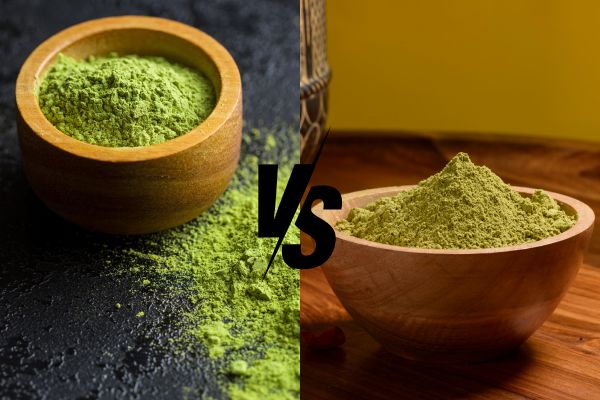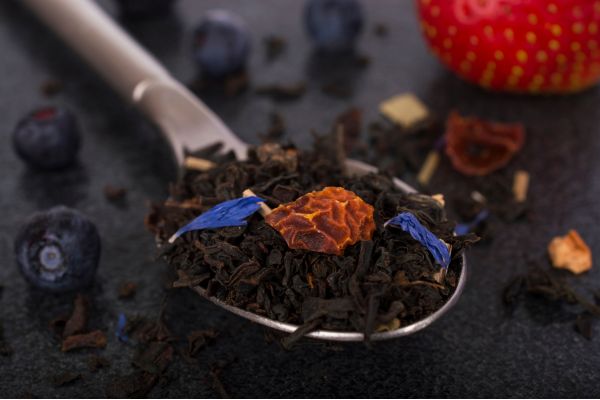Discover how FGC preserves the freshness and original flavor of matcha powder throughout the production process. By using only freshly picked tea leaves, controlling the precise temperature, and testing quality in each step, FGC can ensure vibrant color, rich flavor, and aroma in every batch.
Contents
Introduction
Matcha is a uniquely grown green tea powder with a vibrant color and distinct taste. Beyond its beautiful green color, matcha is renowned for its complex flavor profile, combining umami, sweetness, and subtle bitter notes that create a unique experience. The production of matcha powder requires meticulousness in many stages, from growing tea to grinding. At FGC, we employ advanced technology from Japan to ensure that every step in the matcha production process preserves its freshness and aroma. This article will focus on the key steps to producing matcha powder and what FGC does to maintain the freshness of matcha.
1. Unique taste and vibrant color of matcha powder
Matcha has a richness flavor, which includes sweet, vegetal notes, a smooth texture, and the unique umami taste that lingers on the palate. This exquisite taste is a direct result of the distinctive cultivation and processing techniques used for the tea plant, which set it apart from other green teas.
Taste and aroma of matcha
The taste of high-quality matcha can be described through several key elements. Umami is key to its unique matcha flavor. It is derived from high concentrations of L-theanine, an amino acid that increases when the tea plants grow in shade. The natural sweetness is mild but essential, balancing the bitterness of catechins and complementing the savory umami. Moreover, the fresh, grassy scent of matcha also adds to the overall experience. The quick steaming of freshly harvested leaves retains this aroma and prevents oxidation, maintaining the tea’s fresh, vegetal scent.
The vibrant green color of matcha
The color of matcha is an important factor to recognize high-quality matcha powder. Premium matcha is bright green, while lower quality matcha will have a dull green color. Some are even dark green or slightly yellow. The vibrant green color of matcha comes from the amount of chlorophyll contained in the tea leaves. The shade cultivation of tea plants leads to an increase in chlorophyll, producing leaves that are deeply green. In addition, the freshly harvested tea leaves will immediately be steamed to preserve the color and fresh flavor. The slow grinding process prevents heat buildup, thereby avoiding changing the color of matcha powder.

2. Key steps to produce matcha
Each step in the matcha production process, from shading to milling, plays a crucial role in developing its unique taste and aroma. FGC’s advanced technology meticulously controls shading, steaming, and grinding. We ensure that their matcha retains its characteristic umami, sweetness, freshness, and smooth texture. Let’s explore the key steps in matcha production and how FGC uses state-of-the-art technology to maintain exceptional quality.
Cultivating and harvesting
Firstly, producing high-quality matcha begins with the cultivation of tea plants. Approximately three to four weeks before harvesting, the tea plants intended for matcha are covered with shade cloths (or straws, black vinyl sheets). Shading blocks up to 90% of sunlight from reaching the tea plants, thus forcing them to produce more chlorophyll. This increase in chlorophyll gives the leaves their deep green color, which is a hallmark of premium matcha. Additionally, shading also increases the levels of L-theanine which enhances the umami taste of matcha. As a result, it has a more vibrant, sweeter, and smoother flavor than other green teas.
Farmers harvest the leaves by hand to ensure that only the youngest, most tender leaves are selected. These top leaves contain the highest concentrations of the beneficial compounds for a high-quality matcha. At FGC tea farms, we also harvest tea leaves by hand to ensure that only the best-quality leaves are used for the next stages of production.

Cleaning
Once harvested, the tea leaves are transported to our factory as quickly as possible before they begin to wilt and wither, ensuring freshness. A conveyor belt transfer tea leaves to a clean water tank to wash away dirt and impurities in tea leaves. This washing takes place several times before the leaves are transferred to the next steps.
Steaming
The tea leaves must be steamed immediately to halt oxidation and preserve their vibrant green color. FGC uses a high-precision, temperature-controlled autoclave for this process. These machines apply steam at the right temperature and time (often 100°C for 30-60 seconds), and stir it evenly until all the tea leaves are steamed properly. This prevents oxidation and locks in essential compounds that give matcha its fresh, grassy aroma and green color.
Cooling
After steaming, the leaves must be rapidly cooled to prevent further damage from residual heat and protect their vibrant green color. Workers move the tea leaves a special cooling equipment, which consists of four identical compartments, with the same function. Every compartment has a blower located at the bottom which creates a strong wind. This wind will help cool and reduce the humidity of the tea leaves.
The leaves first enter the first compartment, where they are blown upwards, then fall into the second and third compartments for further processing. After drying and shrinking to the standard surface area, it will fall to the 4th compartments and continue to reduce moisture. This method cools the leaves and separates any that have stuck together due to moisture from steaming. It is crucial to separate the leaves at this stage to ensure they dry evenly during the subsequent drying process.

Drying
After cooling the leaves, the next step is drying. Here, the primary drying brings moisture down to 3-5%. FGC uses low-temperature, convection drying systems that slowly and gently remove moisture from the steamed leaves. These machines circulate warm air evenly across the leaves, ensuring uniform drying without overheating. Maintaining low heat is crucial to preserving the natural nutrients in the leaves, which contribute to the overall flavor and aroma of matcha. In addition, the tea leaves go through a heat drying oven to be roasted in a short time to enhance the flavor and aroma without affecting the color of matcha.
Cutting and sorting
After primary drying, the leaves need to be de-stemmed and deveined accordingly. A separator gently crushes and passes through tea leaves. This helps to separate both the stalks and veins from the tea leaves. After that, they are further processed in a machine that uses forced air from a blower system to remove the stems and veins, keeping only leaf material for the next steps. This automated process enhances consistency and quality control, ensuring a smooth matcha powder free of impurities. This step will create the semi-finished matcha product, called tencha. Tencha will be put into cold storage for preservation or ground into matcha powder.
Milling
The final step in matcha production is milling the dried tencha into a fine powder. Traditionally, matcha is ground using granite stone mills, but FGC has employed advanced ball milling machines to produce matcha on a larger scale. A ball mill operates using a rotating drum filled with stainless steel balls. As the drum rotates, the balls crush and grind the tencha leaves into an ultra-fine powder.
The ball mill allows for highly controlled milling, ensuring the powder is consistently ground to a size of 5–10 microns, essential for achieving matcha’s smooth texture and creamy mouthfeel. Additionally, ball mills minimize heat generation during the milling process, protecting the delicate flavor compounds and preserving the tea’s bright green color.
3. How can FGC preserve the freshness of matcha?
To create high-quality matcha, FGC strives to research and optimize each step of the production process to preserve the freshness of matcha. Our commitment to keeping our matcha powder as fresh as possible is clear through our careful method. These includes selecting only the finest freshly picked tea leaves, maintaining precise temperature control. At the same time, we implement stringent quality assurance procedures.
Using freshly picked tea leaves for production
One of the primary ways FGC preserves the freshness of its matcha powder is by using only freshly picked tea leaves in the production process. Timing is crucial when it comes to matcha production, because tea leaves begin to lose their freshness soon after harvest. FGC ensures that the leaves are processed immediately after being handpicked, reducing the time from harvesting to manufacturing. Therefore, FGC can maintain the vibrant green color, delicate aroma, and rich flavor that are essential to high-quality matcha.

Precision in temperature control
At every phase of production, from steaming to drying and milling, FGC utilizes advanced machinery that enables accurate control of temperature. For instance, during steaming, the tea leaves are exposed to an optimal level of heat that halts oxidation without compromising the delicate flavor profiles. Similarly, the matcha is ground at low temperatures to maintain its vibrant green color and fresh flavor. Excessive heat during any step of the matcha production process could lead to oxidation, leading to another dull color and a bitter taste. Therefore, FGC’s focus on precision in temperature control ensures that the matcha powder is obviously fresh and full of its original flavor, delivering a smooth, creamy mouthfeel when prepared.
Conclusion
Producing matcha powder is a delicate process that requires careful attention to detail at every stage, from shading the plants to grinding the final powder. Every stage is crucial in preserving the vibrant color, fresh aroma, and rich taste that define matcha. At FGC, advanced technology is employed to ensure that these qualities are maintained throughout the production process. It also enables us to produce matcha that meets the highest standards of excellence.
About Future Generation Co., Ltd
Future Generation Company Limited is one of the largest tea and beverage suppliers in Vietnam, with 26 years of experience in production and export. FGC is equipped with modern machines such as Hotfill PET and TetraPak, ensuring high-capacity production. FGC strives to achieve our mission to become Vietnam’s leading healthy beverage company. Our factories also meet international standards such as ISO, HACCP, etc. In addition, we constantly innovate our machinery system, strengthen production capacity, and increase productivity.
FGC also provides Private Label Services. With this service, we can help customers research and formulate beverages, design product label packaging, and create their own brands. This is an ideal solution for small and medium enterprises. Moreover, FGC provides free samples for customers to test before bulk orders. We also ensure delivery as fast as possible.
Contact
Address: R4 building, Office Quarter 02, Royal City, 72A Nguyen Trai St., Thanh Xuan Dist., Hanoi.
Phone: +84 24 73 000 125/ +84 24 73 063 369
Mail: info@vietnam-tea.com
Website: https://oem-fgc.com/
Facebook: https://www.facebook.com/fgcvietnamtea
LinkedIn: https://www.linkedin.com/company/fgcvietnamtea/
Alibaba.com: https://fgcvietnam.trustpass.alibaba.com/
Source:
https://www.takezawa.jp.net/spring/processing_of_matcha.html










